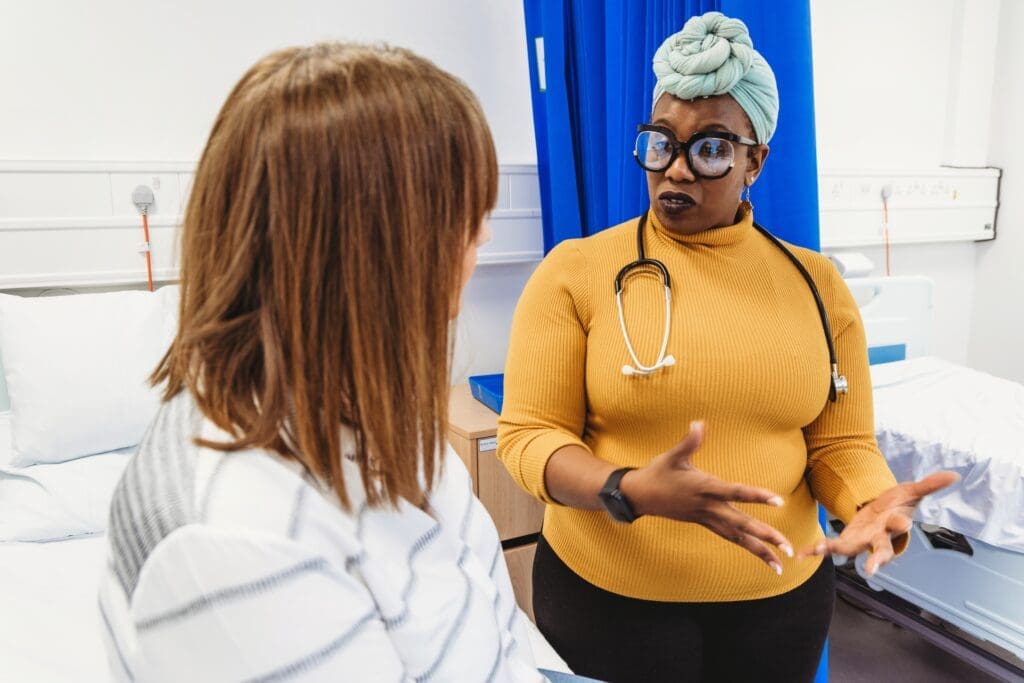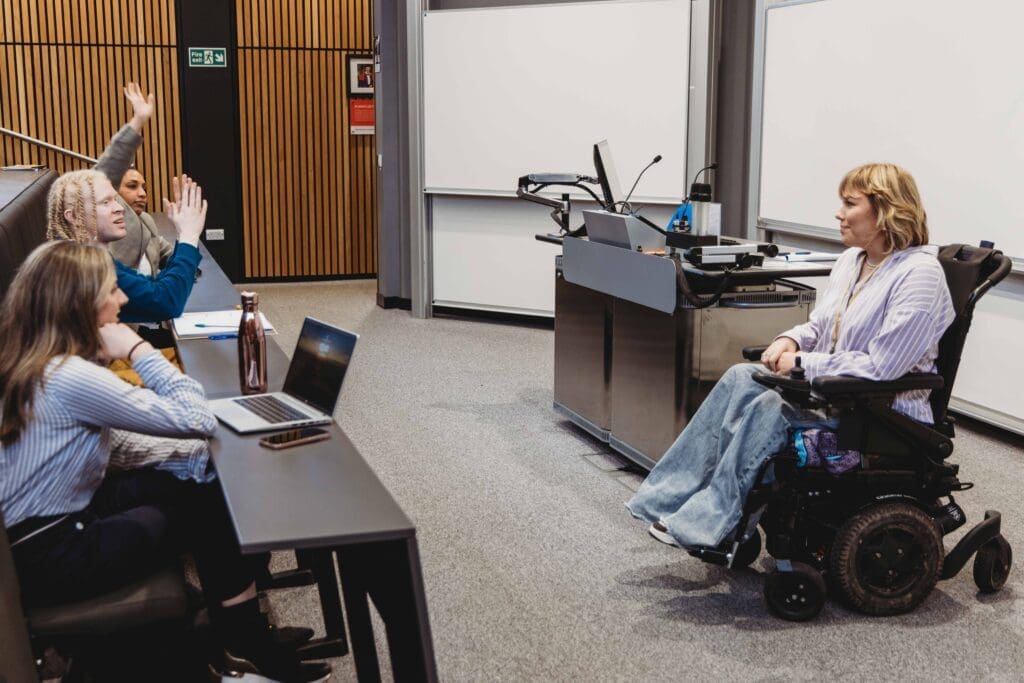London models help change the image of disability


Two London models are helping to improve the way that disability is portrayed in the media by posing for a new collection of images created by Business Disability Forum (BDF) and launched today (3 July). The images are part of a wider campaign, launched in 2024, to challenge perceptions of disability, after rese1arch commissioned by BDF found that only 23 per cent of people with a disability surveyed agreed that images of disabled people used in content they had seen, watched or read reflected their own experience of disability.
Amelia Parillon from Newham and Emma Lines from West London are both disabled and hope the campaign and the new image collection will improve perceptions of disability.
The images are the latest addition to BDF’s Disability Smart Image bank, which form part of Business Disability Forum’s ‘Changing the image of disability’ campaign, to challenge perceptions of visible and less-visible disabilities. All the images have been created with disabled models and volunteers, portraying disabled people in authentic, everyday situations.
Amelia was one of the professional models featured. She is a black woman with less-visible disabilities (ADHD, dyslexia and dyspraxia). When she was younger, she loved taking photographs and that led her into an early career as a model. However, she became disillusioned when she realised that none of the models seemed to be like her. She felt models were always ‘stick thin’, a certain height and they all looked the same. She did not feel they represented her.
“Whether it’s a visible disability or an invisible disability, letting people know you’re not alone is vital. Seeing yourself represented in the wider population means you can think ‘I matter, I exist, I’m here and I’m here to be seen.”
“I think it’s hugely beneficial for companies to use authentic images and imagery in general. As someone who is consuming their product or service, it gives me peace of mind to know they have taken diversity and representation into account. I will trust them a little more if I know it’s not just a banner they put on the side of their building, or a poster, as a tick box exercise.”
– Amelia Parillon, Model
Emma Lines, a wheelchair user from West London, was also involved in the photoshoot. She has a condition called Charcot Marie-Tooth disease, a group of inherited conditions that damage the peripheral nerves and cause muscle weakness and numbness. For Emma, her CMT was not inherited, but was triggered by a mutation and therefore she and her family had no knowledge of the condition prior to her diagnosis.
She grew up feeling out of place at school. Once she left school, she continued to struggle, wondering if there was a place for her in the world.
Emma said that, for much of her life, she hid her disability, including the leg splints she used to wear every day – until this was no longer possible.
“Once my condition unexpectedly progressed and I became a full-time wheelchair user, suddenly my disability became very visible. When I accepted that, it helped me find my way in the world and grow in confidence with who I am.”
“When you have a disability and people around you can’t fully understand what you’re going through, seeing someone like yourself in the media is life-changing as you suddenly realise you’re not alone.”
– Emma Lines, Model
Both Amelia and Emma took part in the shoot at a large university campus. The images show disabled people in everyday situations, such as attending lectures, working in healthcare and socialising.
Business Disability Forum’s Director of Communications and Marketing, Lara Davis, organised the shoot and led the creation of the Disability Smart Image Bank and the ‘Changing the image of disability’ campaign.

“Too often, in advertising and the media, disabilities are portrayed in an unrealistic way. Models may be asked to pose in a wheelchair when they are not a wheelchair user, for example. Or disability representation may be missing altogether from images depicting certain roles or situations. This can leave disabled people feeling alienated and businesses missing out on valuable customers and employees.”
“We hope the additions to our collection of authentic images will help disabled people to be seen and understood, and for them to lead to a wider public understanding of disability.”
– Lara Davis, Director of Communications and Marketing
The images are part of a free collection for media and part of a larger collection of hundreds of images for businesses (accessible via BDF membership). The images are also intended to challenge public views of disability and BDF has created free guidance and its ‘Ten principles of disability-smart imagery’ resource to provide useful advice for everyone.
Go to Business Disability Forum’s ‘Changing the image of disability’ campaign page to find out more.
Notes to editors
The Disability Smart images
The image bank contains 750+ images of people with a broad range of visible and less-visible disabilities and conditions in everyday situations. The images are available to Business Disability Forum Members and Partners and a free collection of 75 images is now available for use by the media. Members of the media can sign up to access the free media collection on BDF’s ‘Information for the media’ page.
The collection and image bank are part of Business Disability Forum’s ‘Changing the image of disability’ campaign, which was launched last year. Research conducted by Ipsos and published by Business Disability Forum as part of the campaign found that disabled people are often ‘missing’ from imagery seen in media, marketing, or advertising.
- A third (32 per cent) of UK adults surveyed by Ipsos had not seen any disability represented in content they had seen, watched or read during the last 6 months. This is despite 1 in 4 people in the UK having a disability.
- At the same time, less than a quarter (23 per cent) of people with a disability surveyed agreed that images of disabled people used in content they had seen, watched or read reflected their own experience of disability.
The ‘Changing the image of disability’ campaign calls on businesses and the media to:
- Increase representation of disabled people in imagery.
- Portray an authentic and realistic view of disability in images.
- Reflect the diversity of disabled people in images.
- Alongside the Disability Smart Image Bank, Business Disability Forum has also published free guidance and its ‘Ten principles of disability-smart imagery’ resource, which are available to everyone and were created with input from disabled people as models and advisers.
Find out more on our website www.businessdisabilityforum.org.uk